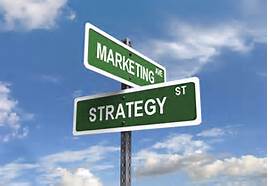
by Fronetics | Feb 4, 2015 | Blog, Data/Analytics, Marketing, Social Media, Strategy

Inbound marketing costs less than outbound marketing. And it works.
The internet has empowered customers. It has provided customers with new methods for finding and researching companies. It has also provided customers with new methods for finding, researching, and buying products.
The internet has changed marketing from a one way street to a two way street.
Customers no longer rely solely on TV/newspaper/magazine ads, billboards, direct mail, email, banner ads, and other traditional outbound marketing channels to learn about new products. These methods are now viewed as too intrusive, especially among younger consumers who regularly tune out the tactics.
Customers want to find YOU (not the other way around)
A study conducted by the Corporate Executive Board’s (CEB) Marketing Leadership Council found that the average customer progresses nearly 60 percent of the way through the purchase decision-making process before engaging with a sales rep. How are they able to do this? By going online. Customers are using websites, blogs, and social media.
A study by Pardot found that 72 percent of B2B buyers begin their research with Google. Other starting points for research: personal networks (15.58%), Yahoo (5.53%), Bing (2.76%), LinkedIn (2.51%) and social networks (2.01%).
What is inbound marketing?
Inbound marketing focuses on consumers finding you.
Inbound marketing meets your customers and prospects where they are, with the information for which they are looking, and at the right moment. Inbound marketing provides value, builds trust and authority, which ultimately result in increased leads and higher conversion rates.
The components of inbound marketing are pretty simple: Create and distribute fresh, relevant, targeted content specifically designed to reach a target audience.
Strategies include:
- Social media marketing
- Blogging and content marketing
- Podcasts
- White papers
- ebooks
- Infographics
- Search engine optimization (SEO)
- Case studies
What is outbound marketing?
In contrast, outbound marketing focuses on paying to broadcast your message to find consumers who will listen to you.
Outbound marketing is a value-driven numbers game. The more banner ads, print ads, and direct mailings you pay for, the more people see your product, and the more sales you’ll make. However, it is costly. Outbound marketing costs 38% more than inbound marketing. The average cost per lead using outbound marketing is $373. The average cost per lead using inbound marketing is $143.
Outbound marketing strategies include:
- Print ads
- TV ads
- Banner ads
- Telemarketing
- Cold calling
- Press releases
- Trade shows
- Email marketing
- Direct mail
Inbound marketing makes sense
Inbound marketing just makes sense. It is a proven methodology and it costs less. Isn’t it time to meet your customers where they are? Get online. Create content. Distribute content. Engage with customers. Optimize your website.
Fronetics Strategic Advisors is a management consulting firm focused on strategy and inbound marketing. When it comes to inbound marketing we take a different approach than other firms. This is because of our business experience and background. We know ROI is important, so our approach is data driven and produces results.
We understand that developing and implementing an inbound marketing strategy can seem daunting. We are here to help. We are happy to take a few minutes and look at your current strategy and give you ideas on how to start, or suggestions on what you can do to make your current strategy more successful. We are also happy to talk with you about what we can do.
We’d love to talk with you about how you can grow your business through inbound marketing.


by Fronetics | Feb 4, 2015 | Blog, Data/Analytics, Marketing, Social Media, Strategy

Inbound marketing costs less than outbound marketing. And it works.
The internet has empowered customers. It has provided customers with new methods for finding and researching companies. It has also provided customers with new methods for finding, researching, and buying products.
The internet has changed marketing from a one way street to a two way street.
Customers no longer rely solely on TV/newspaper/magazine ads, billboards, direct mail, email, banner ads, and other traditional outbound marketing channels to learn about new products. These methods are now viewed as too intrusive, especially among younger consumers who regularly tune out the tactics.
Customers want to find YOU (not the other way around)
A study conducted by the Corporate Executive Board’s (CEB) Marketing Leadership Council found that the average customer progresses nearly 60 percent of the way through the purchase decision-making process before engaging with a sales rep. How are they able to do this? By going online. Customers are using websites, blogs, and social media.
A study by Pardot found that 72 percent of B2B buyers begin their research with Google. Other starting points for research: personal networks (15.58%), Yahoo (5.53%), Bing (2.76%), LinkedIn (2.51%) and social networks (2.01%).
What is inbound marketing?
Inbound marketing focuses on consumers finding you.
Inbound marketing meets your customers and prospects where they are, with the information for which they are looking, and at the right moment. Inbound marketing provides value, builds trust and authority, which ultimately result in increased leads and higher conversion rates.
The components of inbound marketing are pretty simple: Create and distribute fresh, relevant, targeted content specifically designed to reach a target audience.
Strategies include:
- Social media marketing
- Blogging and content marketing
- Podcasts
- White papers
- ebooks
- Infographics
- Search engine optimization (SEO)
- Case studies
What is outbound marketing?
In contrast, outbound marketing focuses on paying to broadcast your message to find consumers who will listen to you.
Outbound marketing is a value-driven numbers game. The more banner ads, print ads, and direct mailings you pay for, the more people see your product, and the more sales you’ll make. However, it is costly. Outbound marketing costs 38% more than inbound marketing. The average cost per lead using outbound marketing is $373. The average cost per lead using inbound marketing is $143.
Outbound marketing strategies include:
- Print ads
- TV ads
- Banner ads
- Telemarketing
- Cold calling
- Press releases
- Trade shows
- Email marketing
- Direct mail
Inbound marketing makes sense
Inbound marketing just makes sense. It is a proven methodology and it costs less. Isn’t it time to meet your customers where they are? Get online. Create content. Distribute content. Engage with customers. Optimize your website.
Fronetics Strategic Advisors is a management consulting firm focused on strategy and inbound marketing. When it comes to inbound marketing we take a different approach than other firms. This is because of our business experience and background. We know ROI is important, so our approach is data driven and produces results.
We understand that developing and implementing an inbound marketing strategy can seem daunting. We are here to help. We are happy to take a few minutes and look at your current strategy and give you ideas on how to start, or suggestions on what you can do to make your current strategy more successful. We are also happy to talk with you about what we can do.
We’d love to talk with you about how you can grow your business through inbound marketing.


by Fronetics | Jan 28, 2015 | Blog, Marketing, Social Media, Supply Chain, Talent

Strategies for attracting and retaining Millennials for the supply chain industry.
This is part one of two in a series examining the role of Millennials in the supply chain industry. Part one highlights strategies for attracting and retaining top Millennial talent.
For the college graduating class of 2015, Jimmy Carter has always been a smiling elderly man who shows up on TV to promote fair elections and disaster relief. Electric cars have always been humming in relative silence on the road. American tax forms have always been available in Spanish. There has always been an Internet ramp onto the information highway.
Since 1998 Beloit College has released its ‘Mindset List’, giving us a look at the “cultural touchstones that shape the lives of students entering college.” The List for this year’s graduating class represents a singular profile of students born in 1993 who are part of a larger, increasingly more influential generation – Millennials. With supply chain industry leaders lamenting a growing talent gap, tapping the Millennial generation may be key to filling that gap.
Who are Millennials?
To help us understand how to attract Millennials and why they could give new life to a graying profession, let’s examine who they are and what motivates them. Millennials, those born after 1981, are generally highly educated – though often saddled with debt and underemployed – digital natives who are decidedly collaborative by nature. They’re delaying marriage and parenthood and instead engaging in pursuits of higher education and travel, fueling their strong sense of optimism. Supply chain companies should be actively seeking to attract these Millennials and leverage their strengths to build a strong supply chain industry outlook.
Attracting Millennials
A growing number of university program offerings reflects a strengthening partnership between academia and the supply chain industry, a strategy many companies are relying on to attract and recruit top candidates. Joining existing programs and supporting the establishment of new programs, such as smaller supply chain certification programs, are effective ways to draw top talent. Further support of academic programs through joint curriculum building and offering internship opportunities help to build strong early relationships with students and will have a positive effect on recruitment efforts come graduation time.
Consider non-traditional channels to promote job openings. The frequent use of social media by Millennials has been well documented. Social media can be used to attract great supply chain talent. Furthermore, using social media for the promotion of job announcements establishes brand awareness and allows for more informal candidate engagement, something Millennials find particularly attractive. Similarly, creating visually appealing job descriptions will help to get more out of job postings.
Compensation plans should reflect motivations by which Millennials are incentivized. Different from their older counterparts, Millennials prioritize flexibility and work mobility over salary when considering a job offer. And, with total outstanding student loan debt topping $1 trillion in 2014, Millennials are favoring companies who offer tuition reimbursement programs.
On-Boarding and Retaining Millennials
Of importance to Millennials are an employer’s social values. They seek employers who they believe are endeavoring to accomplish meaningful work. The ability of a company to articulate, promote, and authentically operate by its core values will determine its success in retaining Millennials.
Millennials seek work environments that foster professional development and growth. In fact, according to the Young Entrepreneurs Council, almost a quarter of Millennials believe training and development to be the most valued benefit from an employer. Creating and implementing mentoring programs for Millennials allows companies to leverage the experience of more seasoned employees while creating growth opportunities for Millennials.
When asked about traditionally structured performance reviews, 80% of Millennials said they would rather receive feedback in real-time, making it clear they desire immediate feedback on job performance. Structuring projects in smaller portions and planning frequent check-ins on progress will keep Millennials on task and allow for more nimble operations.
The high percentage of Millennials reporting their desires to work abroad presents a notable advantage for international supply chain companies. Actively promoting and encouraging international work opportunities ensure the protection of human capital investments long after training ends.
The second part of this series will move beyond attracting and retaining Millennials to examining the supply chain application of Millennial skill sets and will paint the landscape for future significant Millennial contributions within the supply chain industry.

by Fronetics | Jan 28, 2015 | Blog, Marketing, Social Media, Supply Chain, Talent

Strategies for attracting and retaining Millennials for the supply chain industry.
This is part one of two in a series examining the role of Millennials in the supply chain industry. Part one highlights strategies for attracting and retaining top Millennial talent.
For the college graduating class of 2015, Jimmy Carter has always been a smiling elderly man who shows up on TV to promote fair elections and disaster relief. Electric cars have always been humming in relative silence on the road. American tax forms have always been available in Spanish. There has always been an Internet ramp onto the information highway.
Since 1998 Beloit College has released its ‘Mindset List’, giving us a look at the “cultural touchstones that shape the lives of students entering college.” The List for this year’s graduating class represents a singular profile of students born in 1993 who are part of a larger, increasingly more influential generation – Millennials. With supply chain industry leaders lamenting a growing talent gap, tapping the Millennial generation may be key to filling that gap.
Who are Millennials?
To help us understand how to attract Millennials and why they could give new life to a graying profession, let’s examine who they are and what motivates them. Millennials, those born after 1981, are generally highly educated – though often saddled with debt and underemployed – digital natives who are decidedly collaborative by nature. They’re delaying marriage and parenthood and instead engaging in pursuits of higher education and travel, fueling their strong sense of optimism. Supply chain companies should be actively seeking to attract these Millennials and leverage their strengths to build a strong supply chain industry outlook.
Attracting Millennials
A growing number of university program offerings reflects a strengthening partnership between academia and the supply chain industry, a strategy many companies are relying on to attract and recruit top candidates. Joining existing programs and supporting the establishment of new programs, such as smaller supply chain certification programs, are effective ways to draw top talent. Further support of academic programs through joint curriculum building and offering internship opportunities help to build strong early relationships with students and will have a positive effect on recruitment efforts come graduation time.
Consider non-traditional channels to promote job openings. The frequent use of social media by Millennials has been well documented. Social media can be used to attract great supply chain talent. Furthermore, using social media for the promotion of job announcements establishes brand awareness and allows for more informal candidate engagement, something Millennials find particularly attractive. Similarly, creating visually appealing job descriptions will help to get more out of job postings.
Compensation plans should reflect motivations by which Millennials are incentivized. Different from their older counterparts, Millennials prioritize flexibility and work mobility over salary when considering a job offer. And, with total outstanding student loan debt topping $1 trillion in 2014, Millennials are favoring companies who offer tuition reimbursement programs.
On-Boarding and Retaining Millennials
Of importance to Millennials are an employer’s social values. They seek employers who they believe are endeavoring to accomplish meaningful work. The ability of a company to articulate, promote, and authentically operate by its core values will determine its success in retaining Millennials.
Millennials seek work environments that foster professional development and growth. In fact, according to the Young Entrepreneurs Council, almost a quarter of Millennials believe training and development to be the most valued benefit from an employer. Creating and implementing mentoring programs for Millennials allows companies to leverage the experience of more seasoned employees while creating growth opportunities for Millennials.
When asked about traditionally structured performance reviews, 80% of Millennials said they would rather receive feedback in real-time, making it clear they desire immediate feedback on job performance. Structuring projects in smaller portions and planning frequent check-ins on progress will keep Millennials on task and allow for more nimble operations.
The high percentage of Millennials reporting their desires to work abroad presents a notable advantage for international supply chain companies. Actively promoting and encouraging international work opportunities ensure the protection of human capital investments long after training ends.
The second part of this series will move beyond attracting and retaining Millennials to examining the supply chain application of Millennial skill sets and will paint the landscape for future significant Millennial contributions within the supply chain industry.
![Why you need to understand what B2B buyers think about content [Infographic]](https://www.fronetics.com/wp-content/uploads/2024/10/content-B2B-buyers-643x675.png)
by Fronetics | Jan 27, 2015 | Blog, Content Marketing, Marketing
If you want to attract B2B buyers with content, you need to understand what B2B buyers think about content.
93% of B2B companies use content marketing. If you want your content marketing efforts to be effective you need to understand why B2B buyers consume and value content. When you understand what B2B buyers think about content you can create and distribute the right content – content that will help you grow your business by driving profitable customer action.
The CMO Council, Content ROI Center, and Netline conducted a survey of 352 senior-level B2B buyers, influencers, and decision makers with the objective of determining content’s role in influencing B2B buyers in the purchase process.
Why do B2B buyers consume content?
B2B buyers turn to content for a number of reasons including to:
- Learn about new market developments and industry practices;
- Discover new solutions to address a specific problem;
- Address a project or a program being undertaken by their company.
Why do B2B buyers value content?
B2B buyers value content because it:
- Keeps them current on new techniques;
- Provides strategic insights and shapes their purchase specifications;
- Educates them about industry issues, problems, and challenges.

Source: CMO Council
Understanding what B2B buyers think about content and why they use content will enable you to create, curate, and distribute content that speaks to B2B buyers and attracts new customers and engages current customers.
If you consistently create, curate, and distribute content that B2B buyers find valuable, you will realize results.
![Why you need to understand what B2B buyers think about content [Infographic]](https://www.fronetics.com/wp-content/uploads/2024/10/content-B2B-buyers-643x675.png)
by Fronetics | Jan 27, 2015 | Blog, Content Marketing, Marketing
If you want to attract B2B buyers with content, you need to understand what B2B buyers think about content.
93% of B2B companies use content marketing. If you want your content marketing efforts to be effective you need to understand why B2B buyers consume and value content. When you understand what B2B buyers think about content you can create and distribute the right content – content that will help you grow your business by driving profitable customer action.
The CMO Council, Content ROI Center, and Netline conducted a survey of 352 senior-level B2B buyers, influencers, and decision makers with the objective of determining content’s role in influencing B2B buyers in the purchase process.
Why do B2B buyers consume content?
B2B buyers turn to content for a number of reasons including to:
- Learn about new market developments and industry practices;
- Discover new solutions to address a specific problem;
- Address a project or a program being undertaken by their company.
Why do B2B buyers value content?
B2B buyers value content because it:
- Keeps them current on new techniques;
- Provides strategic insights and shapes their purchase specifications;
- Educates them about industry issues, problems, and challenges.

Source: CMO Council
Understanding what B2B buyers think about content and why they use content will enable you to create, curate, and distribute content that speaks to B2B buyers and attracts new customers and engages current customers.
If you consistently create, curate, and distribute content that B2B buyers find valuable, you will realize results.






![Why you need to understand what B2B buyers think about content [Infographic]](https://www.fronetics.com/wp-content/uploads/2024/10/content-B2B-buyers-643x675.png)
